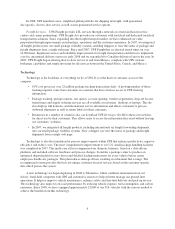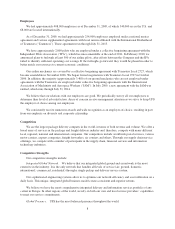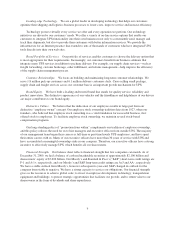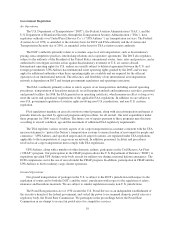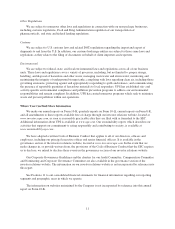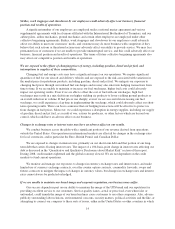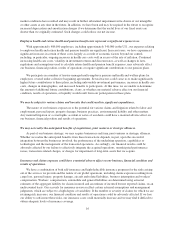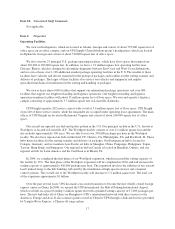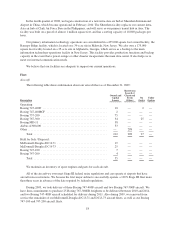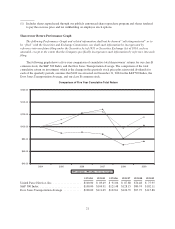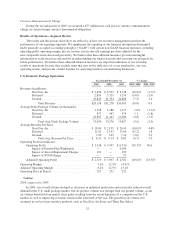UPS 2009 Annual Report Download - page 27
Download and view the complete annual report
Please find page 27 of the 2009 UPS annual report below. You can navigate through the pages in the report by either clicking on the pages listed below, or by using the keyword search tool below to find specific information within the annual report.we operate, could negatively affect our overall reputation and acceptance of our services by customers. Damage
to our reputation and loss of brand equity could reduce demand for our services and thus have an adverse effect
on our business, financial position and results of operations, and could require additional resources to rebuild our
reputation and restore the value of our brand.
A significant privacy breach could adversely affect our business and we may be required to increase our
spending on data security.
The provision of service to our customers and the operation of our network involve the storage and
transmission of proprietary information and sensitive or confidential data, including personal information of
customers, employees and others. Breaches in security could expose us, our customers or the individuals affected
to a risk of loss or misuse of this information, resulting in litigation and potential liability for the company, as
well as the loss of existing or potential customers, damage to our brand and reputation, or disruptions in our
operations. In addition, the cost and operational consequences of implementing further data protection measures
could be significant.
We have invested in a technology infrastructure which supports our global air and ground network and is
critical to support our operations and customer needs. Any major disruption to this infrastructure could
adversely impact our operations, customers and global commerce.
Our ability to serve customers and to compete effectively depends to a large part upon the reliability and
speed of our technology network. While we have built a multi-layered architecture to support swiftly-expanding
worldwide operations and we ensure that our infrastructure is robust, reliable and redundant, there are risks of
malicious or unintentional disruptions to the Internet or our technology infrastructure which could adversely
impact our operations and consequently, our customers.
We make significant capital investments in our business of which a significant portion is tied to projected
volume levels.
We require significant capital investments in our business consisting of aircraft, vehicles, technology,
facilities and sorting and other types of equipment to support both our existing and anticipated growth of our
business. Forecasting projected volume involves many factors which are subject to uncertainty, such as general
economic trends, changes in governmental regulation, and competition. If we do not accurately forecast our
future capital investment needs, we could have excess capacity or insufficient capacity, either of which would
negatively affect our revenues and profitability. In addition to forecasting our capital investment requirements,
we adjust other elements of our operations and cost structure in response to adverse economic conditions;
however, these adjustments may not be sufficient to allow us to maintain our operating margins in an adverse
economy.
We derive a significant portion of our revenues from our international operations and are subject to the risks
of doing business in emerging markets.
We have significant international operations and while the geographical diversity of our international
operations helps ensure that we are not overly reliant on a single region or country, we are continually exposed to
changing economic, political and social developments beyond our control. Emerging markets are typically more
volatile than those in the developed world, and any broad-based downturn in these markets could reduce our
revenues and adversely affect our business, financial position and results of operations.
We are subject to changes in markets and our business plans that have resulted, and may in the future result,
in substantial write-downs of the carrying value of our assets, thereby reducing our net income.
Our regular review of the carrying value of our assets (including our intangible and tangible assets and
investments) has resulted, from time to time, in significant impairments, and we may in the future be required to
recognize additional impairment charges. Changes in business strategy, government regulations, or economic or
15



